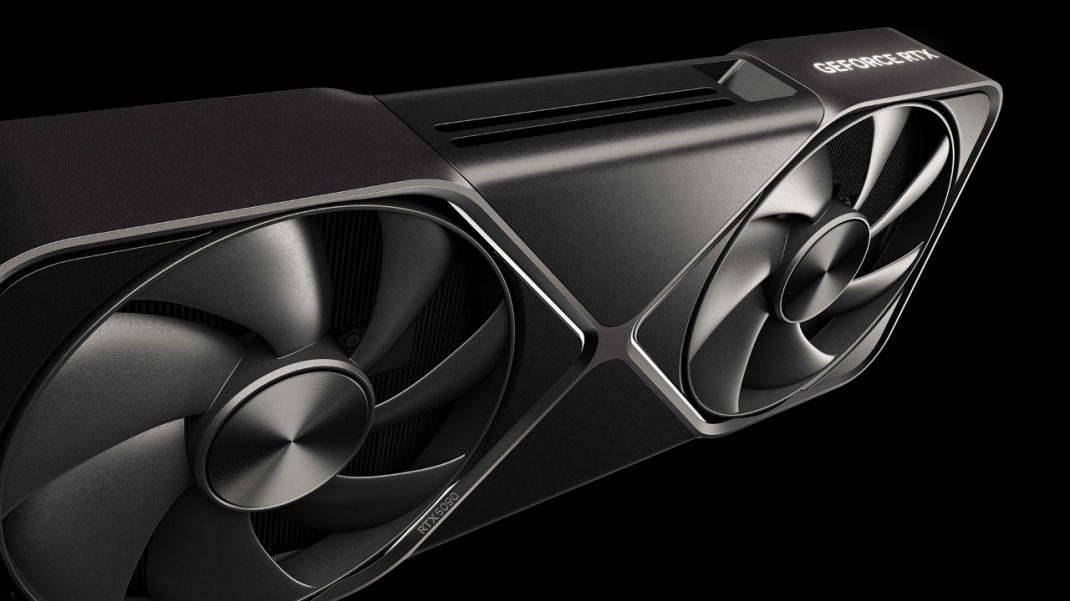Nvidia power meltdowns hit 8-pin adaptors — old power supplies are the common factor
Using a 15-year-old PSU might have contributed somewhat.

New week, new RTX 50 meltdown story. Thankfully, this time, the damage was confined to the power adapter only, thus sparing the card. A Reddit user posted two images of a melted triple 8-pin to 16-pin adapter that powered their Gigabyte RTX 5080 Gaming OC. Further inspection revealed no damage to the GPU connectors, saving them the hassle of going through RMAs. Both the 15-year-old PSU in the user's system, which is non-ATX 3.0 compliant and the GPU's inherent faulty design have been blamed in this case. We also found another similar case involving an older PSU, too.
The images shared by Reddit user u/Appropriate-Hold-821 depict a melted triple 8-pin to 16-pin adapter and, luckily, no damage to the graphics card itself. As can be seen, the user powers their setup with the Corsair AX850 Gold, dating back to 2010. While Nvidia doesn't mandate an ATX 3.0/3.1 compliant PSU for the RTX 50 series, it is highly recommended. Outside of the 12VHPWR connector, the newer standards add plenty of additional safety improvements across the board, which this PSU lacks.
Gaming OC RTX 5080 from r/gigabyte
The user could also potentially be wiring up old 8-pin cables that came with the PSU. Continuous use over many years generally causes connectors to come loose, increasing resistance and leading to overheating. We found another case on r/pcmasterrace, this time with the Gigabyte RTX 4080 Aero OC; even the RTX 40 series is prone to such failures. Fortunately, as before, the damage was limited to the 8-pin connectors, and the user has reported using an aging ATX 2.3 PSU from 2016.
What may have been pushed under the rug as 'user error' last generation, is seemingly starting to affect everyone from average customers to seasoned enthusiasts. Nvidia's reference design for RTX 50 cards does not enable per-pin current measurements and renders the card unable to balance load across each connection. Any breaks or loose connections in the cable are thus invisible to the end user and the GPU. You'd need to dish out $2,800 (MSRP) for a ROG Astral variant to get per-pin current data, and even that variant is incapable of load balancing.
Hypothetically, the GPU could end up drawing as much as 600W through a single 12V pin, leading to excessive heat and melting as a result. Andreas Schilling and Der8auer noted temperatures north of 150 degrees Celsius on the power connectors of their units, with Der8auer's readings showing 22A being drawn across a single pin; the standard rates each pin at a maximum of just 9.5A. The power delivery aspect of these GPUs would benefit from a significant redesign, but we're left wondering when or if Nvidia will address these concerns.
Get Tom's Hardware's best news and in-depth reviews, straight to your inbox.

Hassam Nasir is a die-hard hardware enthusiast with years of experience as a tech editor and writer, focusing on detailed CPU comparisons and general hardware news. When he’s not working, you’ll find him bending tubes for his ever-evolving custom water-loop gaming rig or benchmarking the latest CPUs and GPUs just for fun.
-
valthuer Whenever i see power connectors melting due to Nvidia GPUs, i know it's time to grab some popcorn.Reply -
edzieba In this case, the 12VHPWR connector was just fine, and the 8-pin PCIe connectors melted.Reply -
ezst036 Going forward for RTX 60x0, this is the proper power connector for an Nvidia GPU since they are so power hungry.Reply
The old tried and true. This one aint gonna melt. ATX24.
https://cdn11.bigcommerce.com/s-qfzamxn9kz/images/stencil/original/products/231553/264536/MICRO-ATX-3__94745.1559919434.jpg?c=2 -
Alvar "Miles" Udell It may be 15 years old but at north of 800w and factoring in 2% loss per year, it's still capable of over 600w, which is twice the power draw of the 5080 (as measured by TH in the 5080FE review) and sufficient for the system. It also should not have melted the connectors as the PCIe 8 pin is capable of well over 150w of power before failing (over 200w I believe).Reply
Even though this person demonstrated...questionable judgment, to be kind, in using a 15 year old PSU in a gaming machine, it still shouldn't have happened unless there was physical damage to the connectors, or to the adapter cable. -
King_V I did question the age of the PSU, but, despite it's age, it's a Corsair AX. Aren't those pretty much bulletproof?Reply -
bolweval Reply
On a 15 year old power supply, i would imagine that 8 pin connector had probably been plugged in and out 100's of times, it's load capacity would have been reduced I'm sure..King_V said:I did question the age of the PSU, but, despite it's age, it's a Corsair AX. Aren't those pretty much bulletproof? -
DS426 Reply
It happens because 4080, 4090, 5080, and 5090 can't load balance ANY of the positive 12V pins; the connector type, then, matters less as whether it's 12VHPWR, 12V-2X6, or multiple molex 8-pin connectors, too much current on a single pin / wire is going to allow this sort of thing to happen.edzieba said:Alvar Miles Udell said:It may be 15 years old but at north of 800w and factoring in 2% loss per year, it's still capable of over 600w, which is twice the power draw of the 5080 (as measured by TH in the 5080FE review) and sufficient for the system. It also should not have melted the connectors as the PCIe 8 pin is capable of well over 150w of power before failing (over 200w I believe).
Even though this person demonstrated...questionable judgment, to be kind, in using a 15 year old PSU in a gaming machine, it still shouldn't have happened unless there was physical damage to the connectors, or to the adapter cable.
As others have said, having fewer larger-gauge wires would provide immediate relief to this problem, even if it doesn't completely eliminate it as again, it goes back to the power design flaw of these GPUs that nVidia continues to fail to admit.
Also, I'm in the same pool of thinking that old but high-end, high-power PSUs have never been a true problem in the past and shouldn't be now, but green changed that. This article mentions newer PSUs (ATX 3.0 and especially 3.1) having better safety mechanisms, but they also don't load balance +12VDC on those pins, so it's kind of a moot point IMO if they aren't stopping this fiasco from happening. If anything, this PSU demonstrates its quality and indeed, power output loss over time is really the biggest issue of any, and that still isn't a big one given the hardware that's in this PC. -
truerock There have been comments regarding Nvidia graphics cards "load balancing" across its positive power pins/wires. That would be a bad idea.Reply
It would be great if Nvidia graphics cards monitored the volts and amps in the individual pins and wires and report that info back to the operating system. If the individual pins/wires have something different on them than 12 volts and/or something more than 8.4 amps (plus/minus a few watts per wire/pin) the operating system should shut down - it should not "load balance out-of-spec pins/wires.
OK... so I'll be more specific about amps. Yes, 8.4 amps would be the expected amount if the draw is 600 watts. Obviously, less if the graphics card wants less electricity. The issue is, if there is an unbalanced amount of amps across the positive pins/wires then, ideally, that would be reported to the operating system. And, also, each plug on a PC PSU is rated for a maximum safe amount of amps on each individual wire. If that maximum is exceeded on any wire/pin, it ideally would be reported to the operating system. -
dwd999 It just amazes me that users will spend a huge amount on a gpu and/or cpu and then cheap out on a power supply or some other component like the motherboard, cooling fans, etc. that's just as important as the gpu and/or cpu.Reply -
NinoPino Reply
That PSU was not "cheap", and a new PSU of same category is very expensive.dwd999 said:It just amazes me that users will spend a huge amount on a gpu and/or cpu and then cheap out on a power supply or some other component like the motherboard, cooling fans, etc. that's just as important as the gpu and/or cpu.
From a economic and ecological pov he did the right choice.